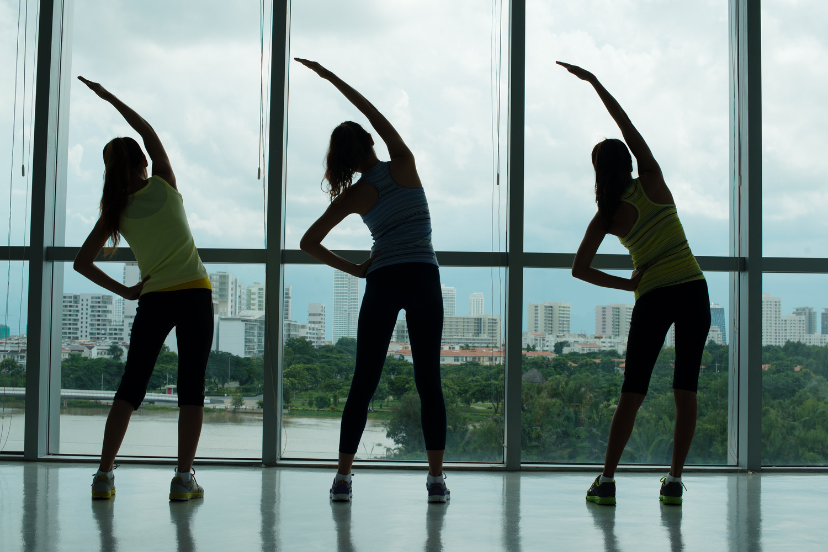Osteoporosis Exercises to Avoid: Safeguard Your Bone Health
Introduction
Welcome to our comprehensive guide on Osteoporosis exercises to avoid. If you or a loved one are managing osteoporosis, it’s crucial to understand which exercises can potentially harm your bones. While staying active is important for overall health, certain movements and activities can increase the risk of fractures and bone deterioration. In this article, we’ll delve into specific exercises and activities that individuals with osteoporosis should approach with caution or avoid altogether. Let’s explore how to protect your bone health through informed choices and safe practices.
What is Osteoporosis?
Before diving into the specifics of exercises, let’s clarify what osteoporosis entails. Osteoporosis is a condition characterized by weakened bones, increasing their susceptibility to fractures and breaks. It occurs when the body loses too much bone, makes too little bone, or both. This bone loss typically occurs gradually over years, often without symptoms until a fracture occurs.
Osteoporosis Exercises to Avoid
It’s crucial to tailor your exercise routine to minimize the risk of fractures. Here are exercises and activities that individuals with osteoporosis should be cautious about:
High-Impact Aerobics and Activities
High-impact aerobics such as running, jumping, or high-intensity aerobics classes can increase the risk of fractures in individuals with osteoporosis. These activities subject the bones to significant impact, which can be detrimental to bone health over time.
Heavy Weightlifting
While strength training is beneficial, lifting heavy weights, especially with improper form or without supervision, can strain the bones and increase the risk of fractures. Avoid exercises that involve heavy lifting or pushing heavy weights above the head, as these movements can stress vulnerable bones.
Spine-Twisting Movements
Exercises that involve twisting the spine, such as intense yoga poses like the full spinal twist or exercises with rapid and repetitive twisting motions, can increase the risk of vertebral fractures in individuals with osteoporosis.
Exercises with Forward Bending
Activities that require significant forward bending at the waist, especially without proper support or using weights, can strain the spine and increase the risk of compression fractures. Examples include toe touches or exercises that involve bending forward to pick up heavy objects.
High-Risk Sports
Certain sports pose a higher risk due to their dynamic and high-impact nature. Sports such as downhill skiing, snowboarding, or contact sports like football or rugby can increase the likelihood of falls or collisions, potentially leading to fractures in individuals with osteoporosis.
How to Modify Your Exercise Routine
While some exercises are best avoided, there are ways to modify your exercise routine to promote bone health without compromising safety. Here’s how:
Low-Impact Aerobics
Opt for low-impact aerobic activities such as brisk walking, elliptical training, or swimming. These exercises provide cardiovascular benefits without subjecting your bones to excessive stress.
Light Resistance Training
Engage in light resistance training using resistance bands or light weights under supervision. Focus on exercises that target major muscle groups while avoiding heavy weights or high-resistance machines.
Balance and Posture Exercises
Incorporate exercises that improve balance and posture, such as tai chi or specific yoga poses designed for osteoporosis patients. These exercises can help reduce the risk of falls and fractures by enhancing stability.
Core Strengthening with Caution
Strengthen your core muscles gently with exercises that avoid excessive spinal flexion or twisting. Planks, modified crunches, or pelvic tilts can help strengthen your core without compromising spinal integrity.
FAQs About Osteoporosis Exercises to Avoid
1. Can I do yoga if I have osteoporosis?
Yes, but choose gentle yoga styles that avoid deep forward bends or intense spinal twists. Look for classes specifically designed for osteoporosis patients.
2. Are there any safe high-impact exercises for osteoporosis?
It’s generally best to avoid high-impact exercises like running or jumping. Opt for low-impact alternatives such as walking or using elliptical machines.
3. Should I lift weights if I have osteoporosis?
Light weightlifting under supervision can be beneficial. Avoid heavy weights or exercises that stress the spine, such as overhead presses or deadlifts.
4. Can swimming help with osteoporosis?
Yes, swimming is an excellent low-impact exercise that promotes cardiovascular health without stressing the bones. It’s a safe choice for osteoporosis patients.
5. Is walking enough to maintain bone health?
Walking is beneficial for overall health and can help maintain bone density, especially when combined with other weight-bearing exercises and strength training.
6. How often should I exercise if I have osteoporosis?
Consult with your healthcare provider to determine a suitable exercise routine based on your individual health status and bone density levels.
Conclusion
Understanding which exercises to avoid with osteoporosis is crucial for protecting your bone health and preventing fractures. By opting for low-impact activities, incorporating gentle strength training, and prioritizing balance and posture exercises, you can maintain an active lifestyle while minimizing the risk of bone injuries. Always consult with your healthcare provider before starting any new exercise regimen, especially if you have osteoporosis or other underlying health conditions. Remember, proactive management of your exercise routine can contribute significantly to your overall well-being and quality of life.




